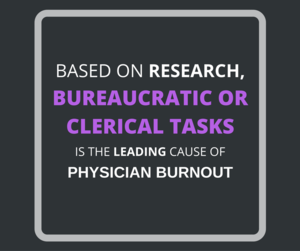Physician Burnout in the Cosmetic Medicine Community
/Physicians are under immense pressure, which could lead to exhaustion that may cost their time in the practice but also their patients. In this article, we tackle the causes of burnout in the field of cosmetic medicine.

It is not uncommon for any working adult to say, “I’m tired, I want to quit”.
Physicians may feel this burden heavier others considering the amount of pressure over a career.
Medscape has done a study on physician burnout and bias last January. Measures of burnout were based on low sense of personal accomplishment, feeling of cynicism, and loss of enthusiasm for work. In cosmetic medicine (i.e. dermatology and plastic surgery), the top reason for burnout is bureaucratic tasks. Other reasons cited were computerization of practice, outcome of the Affordable Care Act, and lower received income.
In an article by dermatologist, Dr. J. Michael Knight, he points out the causes of burnout for aesthetic medicine practitioners (i.e. dermatology and plastic surgery). He further elaborates on the causes also enumerated by Medscape, which contribute to the physical and mental exhaustion of a doctor in cosmetic medicine. Bureaucratic tasks and adoption of telemedicine seem overwhelming to cosmetic practitioners. Time is mostly dedicated to patients, and the growing use of technology in the clinic seems a never-ending race.
Patients are also a key factor in physician burnout. In cosmetic medicine, old procedures evolve and new procedures are implemented. With the increase of insecurities brought upon by social media and peers, more individuals look to aesthetic practitioners for their source of self-esteem. That demand increases, making it difficult for some physicians to fulfil a patient’s request. That could have a butterfly effect as that one patient could network to more individuals seeking treatment, which could mean less inquiries and walk-ins for new and potential patients.
As similarly pointed out by the surveyed doctors in Medscape, low income is a cause for physician burnout as well. Some physicians know that costs are piling up, yet are paid less than most. In an example by Knight, they overshadowed by the deals presented by online sites that would entice their patients to purchase cheaper procedures done by non-physicians. Knight adds that it does not help they are working more hours with lesser pay.
One way to prevent this from happening again is to educate and inform the staff about this occurrence. Acknowledging that physician burnout is important. The fact that other physicians take notice, staff could be made aware of the pressures faced by physicians whether it is medical or practice related.
Another way is to make time for other activities. It will be difficult considering the demanded number of hours, but it is always recommended to make time for yourself or the activities that you once did which could help take your mind off work. A recommended activity is exercise, as it is one of the best ways to relieve any stress.
Aside from this, Mayo Clinic presented nine strategies to avoid burnout and you could find the resource here: http://www.mayoclinicproceedings.org/article/S0025-6196(16)30508-0/pdf
Article Links:
http://modernaesthetics.com/2016/06/physician-burnout-careers-in-crisis-part-1
http://www.medscape.com/features/slideshow/lifestyle/2016/public/overview
http://www.medscape.com/features/slideshow/lifestyle/2016/dermatology
http://www.medscape.com/features/slideshow/lifestyle/2016/plastic-surgery
https://wire.ama-assn.org/life-career/avoiding-burnout-strategies-senior-physicians
http://catalyst.nejm.org/physician-burnout-endemic-healthcare-respond/
http://medicaleconomics.modernmedicine.com/medical-economics/news/what-price-physician-stress-and-burnout?page=0,0





